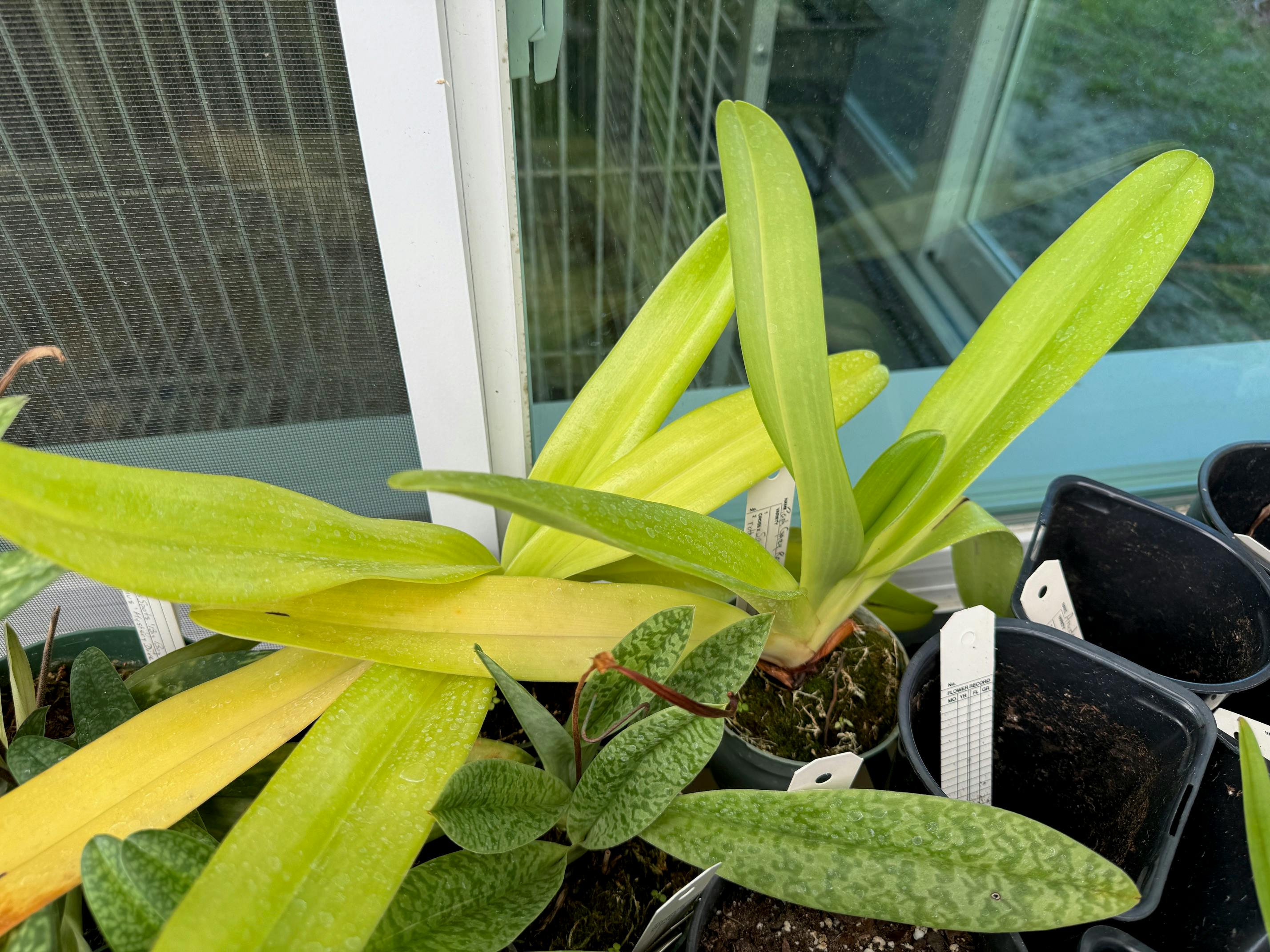
Nutrient Deficiencies


Gallery
Symptoms

Nitrogen - Nitrogen is an essential nutrient used by plants in the manufacture of chlorophyll. Nitrogen deficiency is characterized by a general yellowing of the foliage over time. New growths may be greener as plants move available nitrogen to the front of the plant but eventually, left uncorrected, yellowing of even new growths will occur.

Calcium - Calcium is an essential component of the construction of cells walls. Unlike magnesium and nitrogen, plants cannot move calcium from one part of the plant to another so calcium deficiency shows up first in developing new growths that turn jet black beginning at the very tip of the leaves and progressing steadily down the growth until the entire growth dies. It is distinguished from black rot in that the border between normal green tissue and jet black necrotic tissue is very sharp with now yellow band characteristic of advancing fungal or bacterial infection. It is distinguished from salt-induced leaf-tip dieback and anthracnose infection in thin-leaved orchids in that it involves the new growths, the damage is jet black rather than brown or gray and the advancing damage does not exhibit lines like waves on a beach.
Calcium deficiency is most prevalent in old potting mix due to acidification and during excessively hot summers when plants' metabolism is impacted.

Magnesium - Magnesium is essential to chlorophyll production. It is not as easily transported from older parts of the plant as nitrogen is but can be as chlorophyll is broken down. Plants suffering from magnesium deficiency will exhibit yellowing of the oldest leaves and, if not corrected these leaves fall and the yellowing will progress forward through the plant over time.
Manganese - Plants deficient in manganese will develop red or copper flushing of the foliage when exposed to sharp temperature drops. This is often misdiagnosed with general statements such as "Oh, this is cold stress." This must not be confused with the reddish or maroon blushing many plants produce as a result of excellent light.
Prevention
The best prevention for nutrient deficiencies is the regular use of good fertilizers that contain both macro and micronutrients. Many growers add a calcium-magnesium supplement such as Cal-Mag to their fertilizer regime, especially during the spring and summer months when plants are rapidly growing. Plants continually manufacture chlorophyll to replace the chlorophyll that ages and breaks down. The higher the light intensity, the faster chlorophyll is degraded and the more fertilizer plants can consume.

FREE ACCESS: Orchid DealWire
Get notified when orchid vendors have special promotions and exclusive savings.







